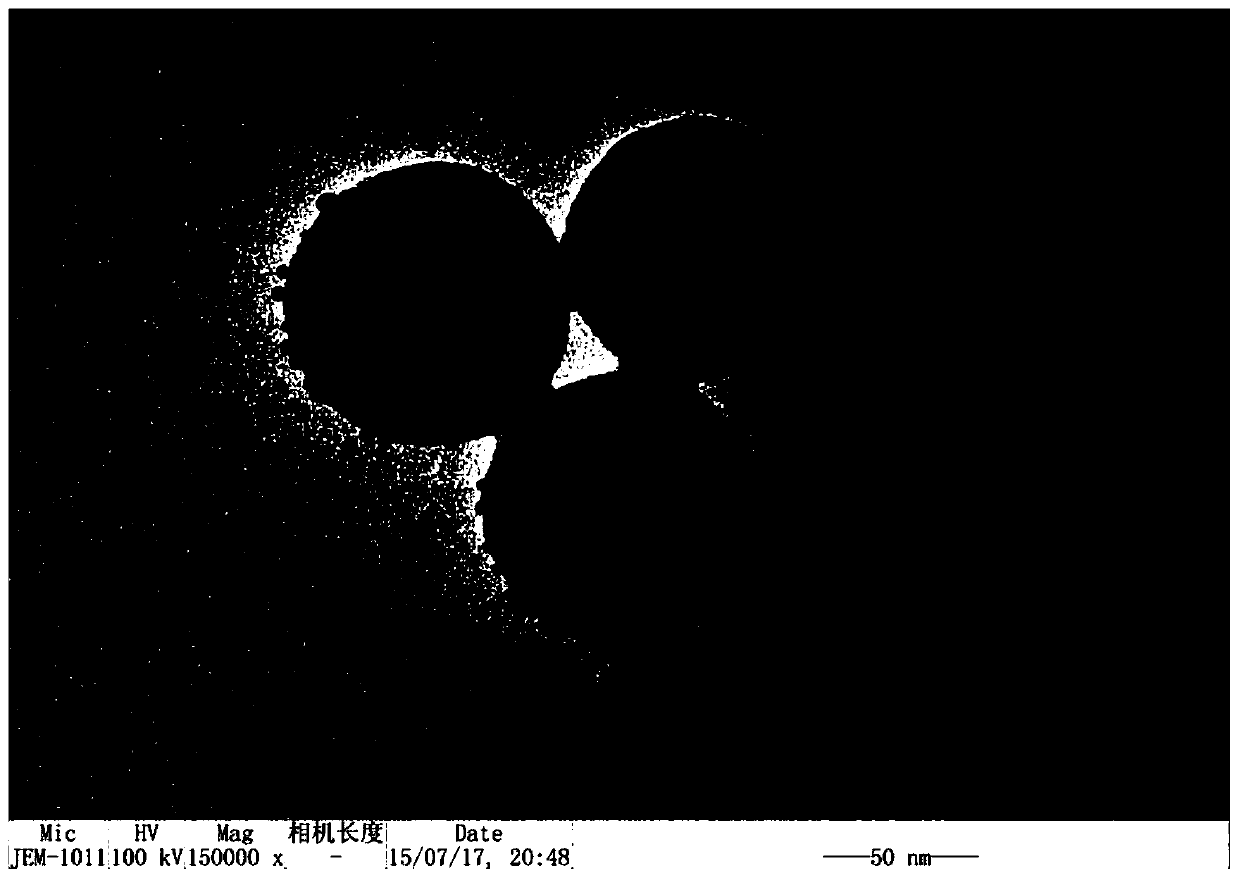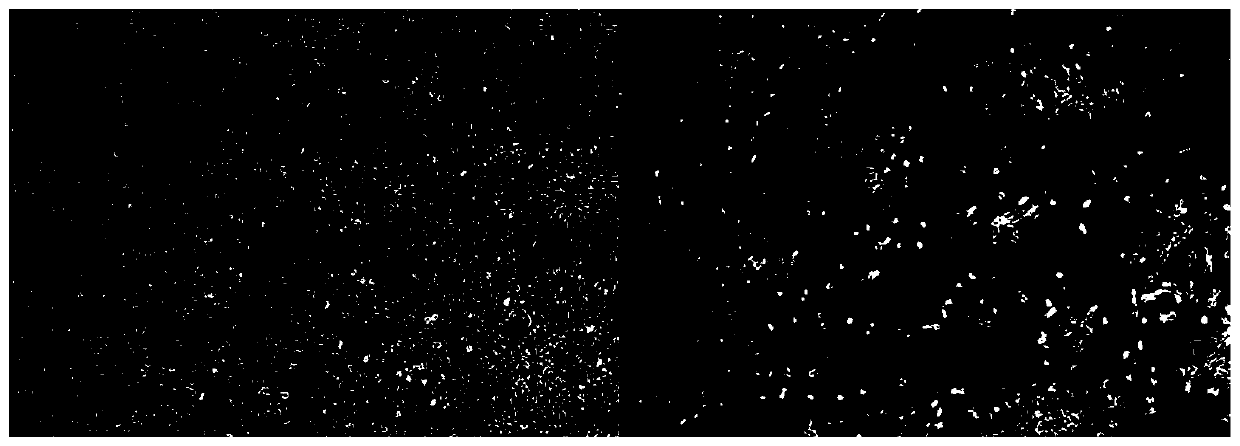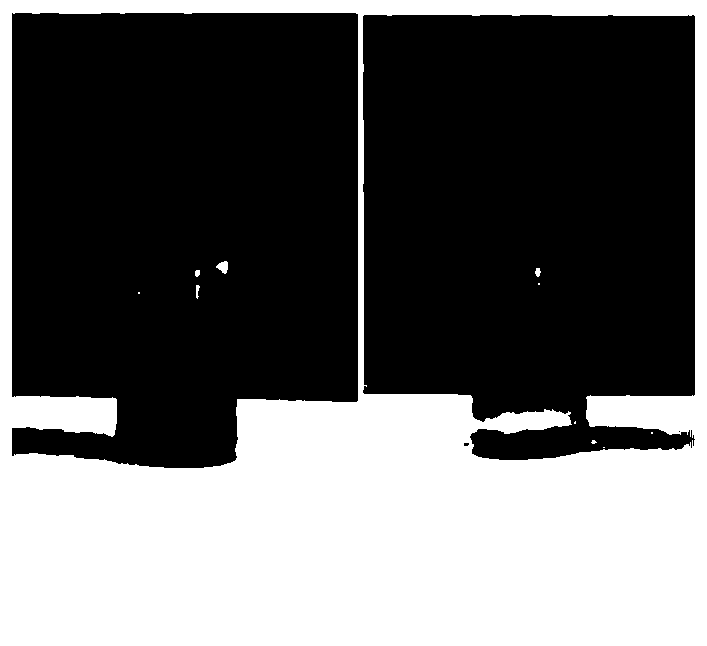Application of a janus nanoparticle as an adhesive for filling materials in dental restorations
A nanoparticle and filling material technology, applied in dentistry, dental preparations, dental prostheses, etc., can solve the problems of insufficient bonding strength, strong hydrophilicity of HEMA, cytotoxicity, etc., and achieve a simple and easy preparation method and improve durability. performance, performance optimization
- Summary
- Abstract
- Description
- Claims
- Application Information
AI Technical Summary
Problems solved by technology
Method used
Image
Examples
Embodiment 1
[0030] Janus nanoparticles, the main body is silica, with amino groups on one side of the hemisphere and carbon-carbon double bonds on the other side; the size is about 100nm, and it is uniform spherical, such as figure 1 shown; white powder; non-toxic, such as figure 2 shown; it can stabilize the water / oil two phases in the adhesive without phase separation, such as image 3 shown.
[0031] Preparation of Janus nanoparticles, the specific steps are as follows:
[0032] 1) preparing biologically inert silica nanoparticles with a diameter of about 100 nm;
[0033] 2) Prepare surface amino-modified silica nanoparticles, use APTMS to modify, and modify at a temperature of 76°C;
[0034] 3) using the Pickering emulsion method to perform selective modification and selective chemical modification on the surface to prepare Janus nanoparticles;
[0035] The surface amino-modified silica nanoparticles obtained in step 2 are dispersed in the mixed system of water and paraffin; the ...
Embodiment 2
[0041] Janus nanoparticles, the main body is silicon dioxide, with amino groups on one side of the hemisphere, and carbon-carbon double bonds on the other side; white powder; non-toxic; the size is about 50nm, in a uniform spherical shape;
[0042] Preparation of Janus nanoparticles, the specific steps are as follows:
[0043] 1) preparing biologically inert silica nanoparticles with a diameter of about 50 nm;
[0044] 2) Prepare surface amino-modified silica nanoparticles, use APTMS to modify, and modify at a temperature of 76°C;
[0045] 3) Use the Pickering emulsion method to carry out selective modification and selective chemical modification on the surface to prepare Janus nanoparticles; disperse the amino-modified silica nanoparticles obtained in step 2 in a mixed system of water and paraffin; The mass ratio of modified silica nanoparticles, water, and paraffin is 1:600:10), and the reaction temperature is 70°C; stirring for 15 minutes makes the nano-biological particle...
Embodiment 3
[0051] Janus nanoparticles, the main body is silicon dioxide, with amino groups on one side of the hemisphere, and carbon-carbon double bonds on the other side; white powder; non-toxic; the size is about 10nm, in a uniform spherical shape;
[0052] Preparation of Janus nanoparticles, the specific steps are as follows:
[0053] 1) preparing biologically inert silica nanoparticles with a diameter of about 10 nm;
[0054] 2) Prepare surface amino-modified silica nanoparticles, use APTMS to modify, and modify at a temperature of 76°C;
[0055] 3) Use the Pickering emulsion method to carry out selective modification and selective chemical modification on the surface to prepare Janus nanoparticles; disperse the amino-modified silica nanoparticles obtained in step 2 in a mixed system of water and paraffin; The mass ratio of modified silica nanoparticles, water, and paraffin is 1:300:20; stir for 15 minutes to distribute nano-biological particles in a single layer of paraffin / water i...
PUM
| Property | Measurement | Unit |
|---|---|---|
| diameter | aaaaa | aaaaa |
| diameter | aaaaa | aaaaa |
| diameter | aaaaa | aaaaa |
Abstract
Description
Claims
Application Information
 Login to View More
Login to View More - R&D
- Intellectual Property
- Life Sciences
- Materials
- Tech Scout
- Unparalleled Data Quality
- Higher Quality Content
- 60% Fewer Hallucinations
Browse by: Latest US Patents, China's latest patents, Technical Efficacy Thesaurus, Application Domain, Technology Topic, Popular Technical Reports.
© 2025 PatSnap. All rights reserved.Legal|Privacy policy|Modern Slavery Act Transparency Statement|Sitemap|About US| Contact US: help@patsnap.com



